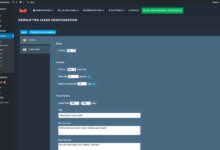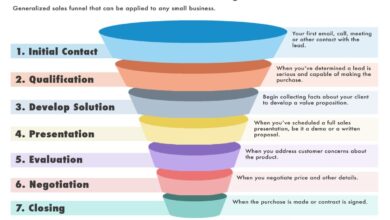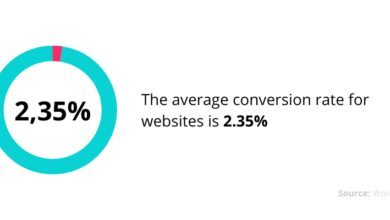Hot Leads: 7 Proven Strategies to Generate Explosive Results
Want to skyrocket your sales? It all starts with one thing: Hot Leads. These are the golden tickets—prospects who aren’t just interested but ready to buy. In this deep dive, we’ll uncover exactly how to find, attract, and convert them.
What Are Hot Leads and Why They Matter

At the heart of every successful sales funnel lies a steady stream of hot leads. But what exactly makes a lead “hot”? Unlike cold or warm leads, hot leads have shown clear, recent, and active interest in your product or service. They’re not just browsing—they’re researching, comparing, and often just one step away from making a purchase decision.
Defining Hot Leads vs. Cold and Warm Leads
The sales world categorizes leads into three main buckets: cold, warm, and hot. Cold leads are those who’ve had minimal or no interaction with your brand. Warm leads have engaged—maybe they downloaded a guide or signed up for a newsletter—but aren’t ready to buy yet. Hot leads, on the other hand, have taken actions that signal strong buying intent, such as requesting a demo, asking for pricing, or visiting your pricing page multiple times.
- Cold leads: No engagement, low intent
- Warm leads: Some engagement, medium intent
- Hot leads: High engagement, strong purchase intent
Understanding this distinction is critical because it shapes your follow-up strategy. You wouldn’t treat a first-time visitor the same way you’d treat someone who’s filled out a contact form asking for a quote—would you?
Why Hot Leads Convert Faster
Hot leads are primed for conversion. According to research by Salesforce, sales teams close hot leads at a rate 5x higher than cold ones. Why? Because these prospects have already done part of the work—they’ve identified a problem, started looking for solutions, and found yours. Your job isn’t to convince them they need help; it’s to prove you’re the best solution.
“Hot leads don’t need more information—they need a reason to choose you now.”
This shift in mindset is crucial. Instead of long nurturing cycles, you focus on urgency, trust-building, and removing friction in the buying process.
How to Identify Hot Leads in Your Pipeline
Not every person who visits your site or clicks an ad is a hot lead. The key is knowing which signals to look for. Identifying hot leads early allows you to prioritize them, allocate resources efficiently, and increase your close rate.
Behavioral Indicators of a Hot Lead
Hot leads leave digital footprints. These behaviors are strong predictors of buying intent:
- Visited pricing or packages page multiple times
- Downloaded a product brochure or case study
- Requested a free trial or demo
- Submitted a contact form with specific questions
- Clicked on a “Buy Now” or “Get Quote” CTA
Tools like HubSpot and Marketo can track these behaviors and score leads automatically based on engagement level.
Using Lead Scoring to Prioritize Hot Leads
Lead scoring assigns numerical values to prospects based on their actions and profile data. For example:
- +10 points for visiting the pricing page
- +20 points for requesting a demo
- +15 points for being a decision-maker (e.g., job title like “Marketing Director”)
- -5 points for inactivity over 30 days
Once a lead crosses a certain threshold—say, 70 points—they’re flagged as “hot” and routed to sales immediately. This system ensures your team focuses on the right people at the right time.
“Without lead scoring, you’re flying blind in a storm of data.”
According to Gartner, companies using lead scoring see a 77% increase in lead conversion rates.
Top 7 Strategies to Generate Hot Leads
Now that you know what hot leads are and how to spot them, let’s dive into the most effective ways to generate them consistently. These aren’t just tactics—they’re proven systems used by top-performing sales and marketing teams.
1. Offer High-Value Lead Magnets
A lead magnet is a free resource offered in exchange for contact information. But not all lead magnets are created equal. To attract hot leads, your offer must solve an urgent, specific problem.
- Free trials with full access
- Consultation calls with experts
- Customized ROI calculators
- Industry-specific templates or tools
For example, a SaaS company might offer a “Free 14-Day Trial with Onboarding Support.” This doesn’t attract casual browsers—it attracts serious buyers testing solutions.
The key is relevance. A study by Content Marketing Institute found that targeted lead magnets generate 3x more hot leads than generic ones.
2. Leverage Retargeting Ads to Re-Engage Warm Leads
Most website visitors don’t convert on the first visit. Retargeting brings them back by showing personalized ads based on their behavior.
- Target users who visited pricing but didn’t convert
- Show case studies to those who viewed product pages
- Offer a discount or demo reminder to cart abandoners
Platforms like Google Ads and Facebook Ads allow pixel-based retargeting, ensuring your message reaches the right audience at the right time.
According to WordStream, retargeted visitors are 70% more likely to convert than first-time visitors.
3. Host Live Webinars with Exclusive Offers
Webinars are one of the most effective ways to generate hot leads. Why? Because attendees self-identify as interested and invested.
- Focus on solving a pressing industry challenge
- Include a live Q&A to build trust
- Offer an exclusive post-webinar deal (e.g., “Attendees get 20% off”)
For instance, a cybersecurity firm might host a webinar titled “How to Prevent Data Breaches in 2024” and offer a free security audit to attendees. This filters out tire-kickers and attracts decision-makers.
Data from ON24 shows that 60% of webinar attendees are sales-ready—making them prime hot lead material.
4. Use Chatbots to Qualify Leads in Real Time
Chatbots aren’t just for customer service—they’re powerful lead qualification tools. When set up correctly, they can identify hot leads the moment they land on your site.
- Ask qualifying questions (e.g., “Are you looking to implement a solution this quarter?”)
- Route high-intent leads directly to sales
- Offer instant demos or consultations
For example, Drift’s conversational marketing platform uses AI chatbots to engage visitors and book meetings with sales reps—all without human intervention.
According to Drift’s Conversational Marketing Report, companies using chatbots see a 3x increase in qualified leads.
5. Create Case Studies That Speak to Pain Points
Hot leads want proof, not promises. Case studies provide real-world evidence that your solution works.
- Focus on measurable results (e.g., “Increased revenue by 150%”)
- Highlight similar industries or challenges
- Include direct quotes from clients
Place these on high-traffic pages like your homepage or product pages. A well-placed case study can turn a warm lead into a hot one by reducing perceived risk.
As Content Marketing Institute reports, 78% of B2B buyers say case studies influence their purchasing decisions.
6. Run Targeted LinkedIn Campaigns for B2B Hot Leads
For B2B companies, LinkedIn is the gold standard for generating high-intent leads. Its targeting options allow you to reach decision-makers by job title, industry, company size, and more.
- Use Sponsored Content to promote whitepapers or webinars
- Run InMail campaigns with personalized messages
- Target followers of competitor pages
A financial software company, for example, could target “CFOs at mid-sized tech firms” with a message about “Reducing Accounting Overhead by 40%.” This precision ensures only relevant, high-potential leads engage.
LinkedIn reports that its platform generates 80% of B2B leads online—more than any other social network.
7. Optimize Landing Pages for Conversion
Even the best lead gen strategy fails if your landing page doesn’t convert. A high-converting landing page removes distractions and focuses on one goal: capturing hot leads.
- Clear, benefit-driven headline (e.g., “Get Your Free ROI Report in Minutes”)
- Minimal form fields (name, email, maybe company)
- Strong CTA with urgency (e.g., “Start My Free Trial Now”)
- Trust signals (logos, testimonials, security badges)
Tools like Unbounce and Instapage allow A/B testing to continuously improve performance.
According to Crazy Egg, optimized landing pages can increase conversions by up to 200%.
The Role of CRM in Managing Hot Leads
Generating hot leads is only half the battle. To maximize ROI, you need a system to manage, track, and nurture them effectively. That’s where Customer Relationship Management (CRM) software comes in.
How CRM Systems Capture and Track Hot Leads
A robust CRM like Salesforce or Zoho CRM acts as a central hub for all lead data. It automatically logs interactions—website visits, email opens, form submissions—and assigns lead scores based on behavior.
- Integrates with marketing tools (email, ads, webinars)
- Tracks lead source and journey
- Provides real-time alerts for hot lead activity
This visibility ensures no hot lead slips through the cracks.
Automating Follow-Ups for Faster Response
Speed matters. Research by MarketingProfs shows that leads contacted within 5 minutes are 9x more likely to convert.
- Set up automated email sequences for new hot leads
- Trigger SMS or chat notifications to sales reps
- Use workflows to assign leads based on territory or product interest
Automation doesn’t replace human touch—it enhances it by ensuring timely, relevant follow-up.
“The best salesperson in the world can’t close a lead they never get to in time.”
Measuring the Success of Your Hot Leads Strategy
You can’t improve what you don’t measure. Tracking the right metrics helps you refine your approach and scale what works.
Key Metrics to Track for Hot Leads
Focus on these KPIs to evaluate performance:
- Lead-to-customer conversion rate
- Average response time to hot leads
- Cost per hot lead
- Hot lead volume over time
- Sales cycle length for hot leads
For example, if your conversion rate is low despite high lead volume, the issue might be lead quality or follow-up speed.
Using Analytics to Optimize Lead Generation
Tools like Google Analytics, CRM dashboards, and marketing automation platforms provide insights into what’s working.
- Identify top-performing lead sources
- Analyze drop-off points in your funnel
- Test different messaging and offers
Continuous optimization turns good lead gen into great lead gen.
Common Mistakes That Kill Hot Leads
Even with the best strategies, companies often sabotage their own success. Avoid these pitfalls to protect your pipeline.
Ignoring Lead Follow-Up Speed
As mentioned, response time is critical. A lead who’s hot today may go cold in 24 hours. Yet, many companies take days to respond.
- Solution: Implement instant notifications and SLAs for follow-up
Set a rule: every hot lead gets a response within 5 minutes.
Poor Lead Qualification
Not every interested prospect is a good fit. Chasing unqualified leads wastes time and lowers morale.
- Solution: Use BANT (Budget, Authority, Need, Timeline) or CHAMP (Challenges, Authority, Money, Prioritization) frameworks to qualify
Ask direct questions early to confirm readiness.
Over-Automating the Human Touch
Automation is powerful, but over-reliance can make your brand feel impersonal.
- Solution: Balance automation with personalized outreach
- Use video messages, handwritten notes, or phone calls for high-value leads
“Automation should enhance relationships, not replace them.”
Future Trends in Hot Leads Generation
The way we generate and manage hot leads is evolving. Staying ahead of trends ensures long-term success.
AI-Powered Lead Scoring and Predictive Analytics
AI is revolutionizing lead scoring by analyzing vast datasets to predict which leads are most likely to convert.
- Tools like Salesfusion and InsideSales use machine learning to identify patterns
- Predictive scoring improves accuracy over traditional methods
Expect AI to become standard in CRM platforms.
Hyper-Personalization at Scale
Generic messaging is dead. The future belongs to hyper-personalized experiences.
- Dynamic content that changes based on user behavior
- Emails that reference past interactions
- Ads tailored to individual pain points
According to McKinsey, personalization can reduce acquisition costs by up to 50%.
What are hot leads?
Hot leads are prospects who have shown strong, recent interest in your product or service and are close to making a purchase decision. They often engage with high-intent actions like requesting a demo or visiting pricing pages.
How do you generate hot leads?
You can generate hot leads through targeted strategies like offering free trials, hosting webinars, using retargeting ads, leveraging LinkedIn campaigns, and optimizing landing pages for conversion.
What’s the difference between hot, warm, and cold leads?
Cold leads have little to no engagement, warm leads have shown some interest (e.g., downloading a guide), and hot leads have demonstrated clear buying intent (e.g., asking for pricing).
How fast should you follow up with a hot lead?
Within 5 minutes. Research shows that leads contacted this quickly are up to 9x more likely to convert than those contacted later.
What tools help manage hot leads?
CRM platforms like Salesforce, HubSpot, and Zoho CRM help track, score, and automate follow-up with hot leads, ensuring no opportunity is missed.
Hot leads are the lifeblood of any high-performing sales team. They convert faster, require less nurturing, and drive revenue more efficiently. By understanding what makes a lead “hot,” using proven strategies to generate them, and leveraging tools to manage and follow up quickly, you can build a predictable, scalable pipeline. Avoid common mistakes, track the right metrics, and stay ahead of trends like AI and personalization. The result? Explosive growth and a competitive edge that lasts.
Further Reading:









